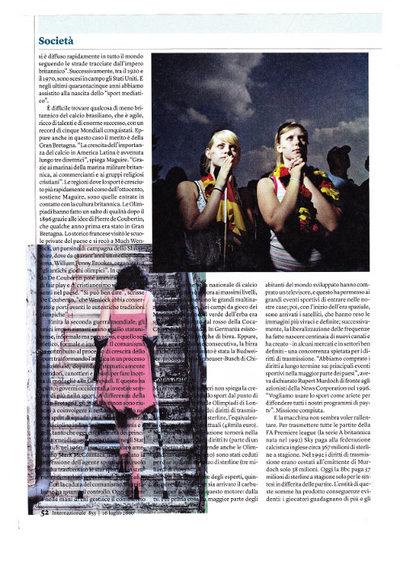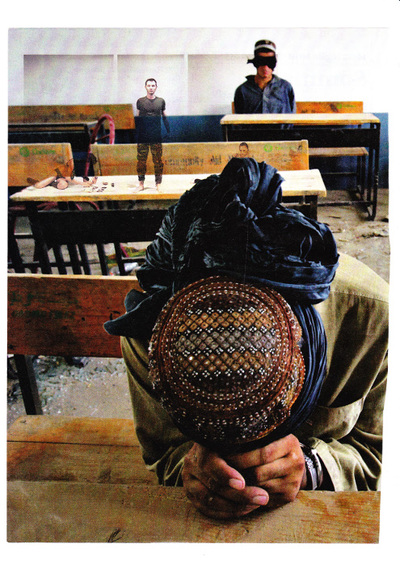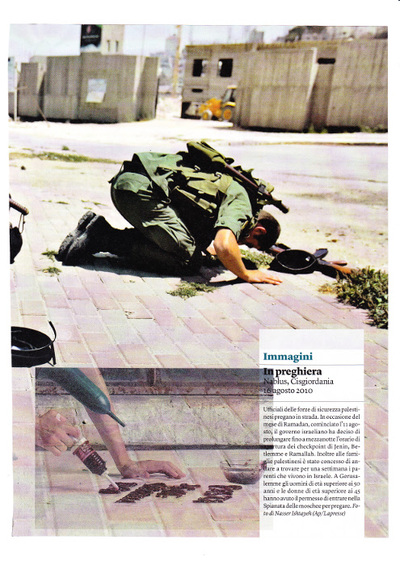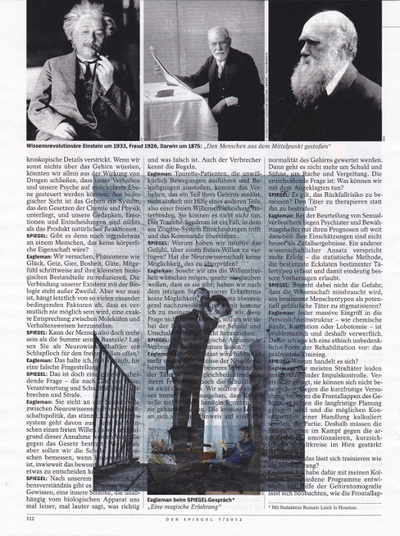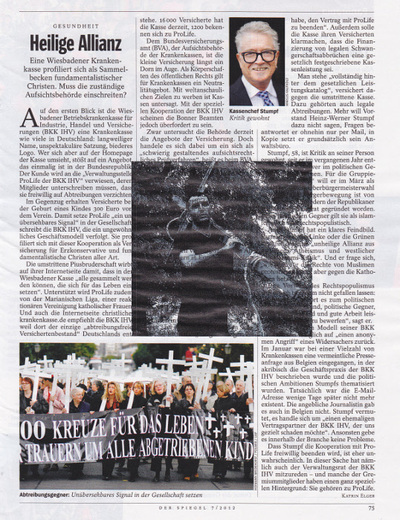Riflessione sulla frustrazione dell'artista di fronte ad un mondo che si esperisce quotidianamente attraverso le fonti mediatiche, ma a cui solo raramente si ha accesso dal vivo. L'artista cerca allora un nuovo modo per entrare a contatto con i flussi della storia rendendo fittizio se stesso e inserendosi dentro ai confini del pubblicato.
Reflection on the artist's frustration towards a world that experiences itself daily through media sources, but to which it is possible to access in person only rarely. The artist then searches for new ways to get in touch with history's flows, turning himself within the borders of what is published.
Reflection on the artist's frustration towards a world that experiences itself daily through media sources, but to which it is possible to access in person only rarely. The artist then searches for new ways to get in touch with history's flows, turning himself within the borders of what is published.
Frames
Installazione
Foto di performance stampate su pagine di rivista
cm 20x30 ca. -
Work in progress - 2011
Foto di performance stampate su pagine di rivista
cm 20x30 ca. -
Work in progress - 2011
L'installazione, non ancora terminata, sarà composta da un elevato numero di pagine di rivista sovrastampate con foto di performance degli artisti. Ogni immagine, montata su cartoncino e incorniciata (frame, nella doppia accezione di cornice e di fotogramma video), evidenzia il desiderio negato di apparire all'interno del mondo degno di nota, quello selezionato e scelto per diventare pubblicazione a grande tiratura e, per quanto effimera, storia. Il tentativo svela il narcisismo estremo di una condizione paradossale, quella dell'artista impotente di fronte ai grandi flussi mediatici, ma sempre proteso verso di essi.
Il lavoro Frame è stato oggetto di tesi di laurea da parte di Anna Viani, studentessa Egart dell'Università Ca' Foscari di Venezia.
The installation project consists of a large amount of magazine pages with photos of the artists’ performance overprinted. Every image, placed on cardboard and framed (frame, in the double meaning of the actual frame and of video frame), highlights the denied desire to appear in a world worth of notice, the one chosen to become a publication in large circulation and, however ephemeral, in history. The attempt reveals the extreme narcissism of a paradoxical condition, the one of the artist who is impotent against large media flows, but who is also eternally stretched towards them.
The work Frames has been graduation thesis material for Anna Viani, Egart student at Ca’ Foscari University of Venice.
Il lavoro Frame è stato oggetto di tesi di laurea da parte di Anna Viani, studentessa Egart dell'Università Ca' Foscari di Venezia.
The installation project consists of a large amount of magazine pages with photos of the artists’ performance overprinted. Every image, placed on cardboard and framed (frame, in the double meaning of the actual frame and of video frame), highlights the denied desire to appear in a world worth of notice, the one chosen to become a publication in large circulation and, however ephemeral, in history. The attempt reveals the extreme narcissism of a paradoxical condition, the one of the artist who is impotent against large media flows, but who is also eternally stretched towards them.
The work Frames has been graduation thesis material for Anna Viani, Egart student at Ca’ Foscari University of Venice.
Emotional Wunderkammer
|
Oggetti vari
Dimensioni naturali Dal 2002 a oggi |
L'Emotional Wunderkammer, ossia camera delle meraviglie emozionale, è un lavoro di raccolta di oggetti eterogenei, accumulati negli anni e appartenenti tanto alla sfera privata quanto alla sfera espositiva. Oggetti, fotografie, disegni privi di una relazione diretta tra loro, ma tutti in grado di comporre un universo, potevano trovare una collocazione univoca proprio per la loro natura di frammenti.
La Wunderkammer, nei secoli, ha dato vita al concetto stesso di museo. Con questo riferimento esplicito gli artisti portano in superficie una riflessione in atto sull'idea contemporanea di museo, sulle dinamiche che includono ed escludono dalle collezioni, ormai sempre più rare, possedute da fondazioni e istituzioni. La domanda su dove siano i collezionisti che dovrebbero desiderare il possesso dei loro lavori, sulla sorte di opere fatte di plastica e carta piuttosto che di avorio e pietre preziose, sulla possibilità di cristallizzare un concetto sotto la superficie protettiva di una teca, li ha portati a creare il loro nuovo antenato del museo futuro, in un circuito che va dai se stessi artisti ai se stessi curatori, dai se stessi collezionisti, ai se stessi curiosi fruitori: paradosso estremo nell'epoca della rete e del villaggio globale. |
The Emotional Wunderkammer, i.e. room of emotional wonders, is a work that gathers different objects collected through the years and belonging both to the private sphere and the exhibitional one. Objects, photographies, drawings with no direct connection between each other, but each of them composes a universe, and they could all find a univocal collocation just because of their being fragments.
Through the centuries, the Wunderkammer has giving birth to the actual concept of the museum. With this explicit reference the artists bring to the surface a reflection on the contemporary idea of museum, on the dynamics that include and exclude from collections, that grow fewer in number, owned by foundations and institutions. The question on where the collectors that should desire the possession of their works are, on the fate of pieces made of plastic or paper, or of ivory and gemstones, on the possibility to crystallise a concept underneath a protective showcase, it all made them create their new ancestor of the future museum, in a course that passes through themselves ad actual artists, actual curators, actual collectors and curious beneficiaries: extreme paradox in the era of the internet and of the global village.
Through the centuries, the Wunderkammer has giving birth to the actual concept of the museum. With this explicit reference the artists bring to the surface a reflection on the contemporary idea of museum, on the dynamics that include and exclude from collections, that grow fewer in number, owned by foundations and institutions. The question on where the collectors that should desire the possession of their works are, on the fate of pieces made of plastic or paper, or of ivory and gemstones, on the possibility to crystallise a concept underneath a protective showcase, it all made them create their new ancestor of the future museum, in a course that passes through themselves ad actual artists, actual curators, actual collectors and curious beneficiaries: extreme paradox in the era of the internet and of the global village.
